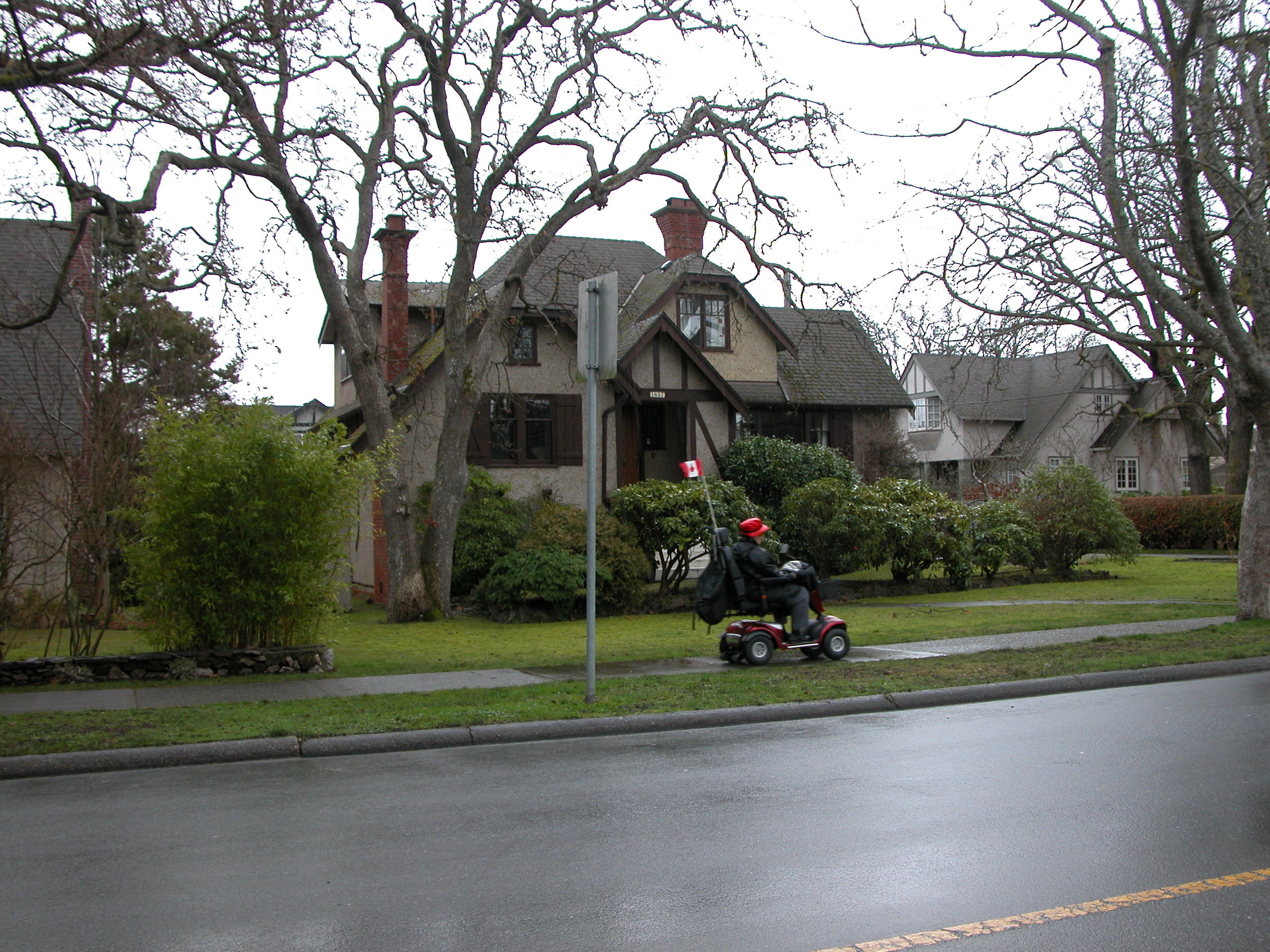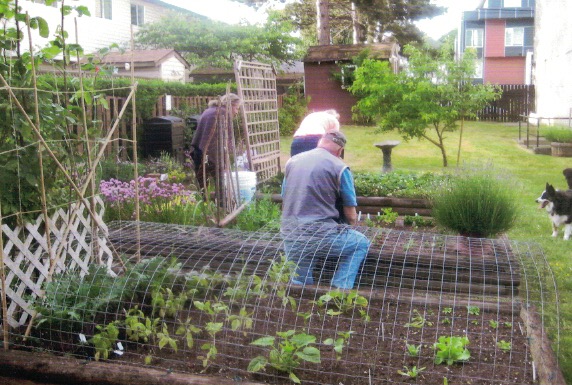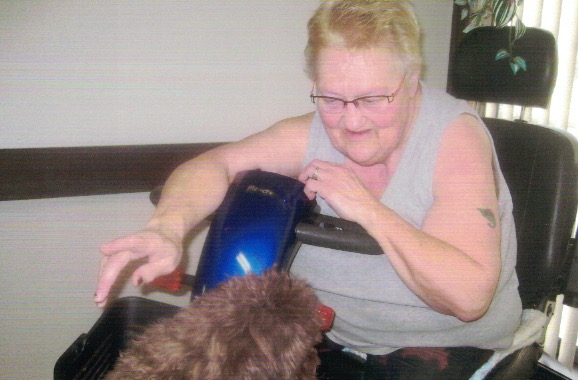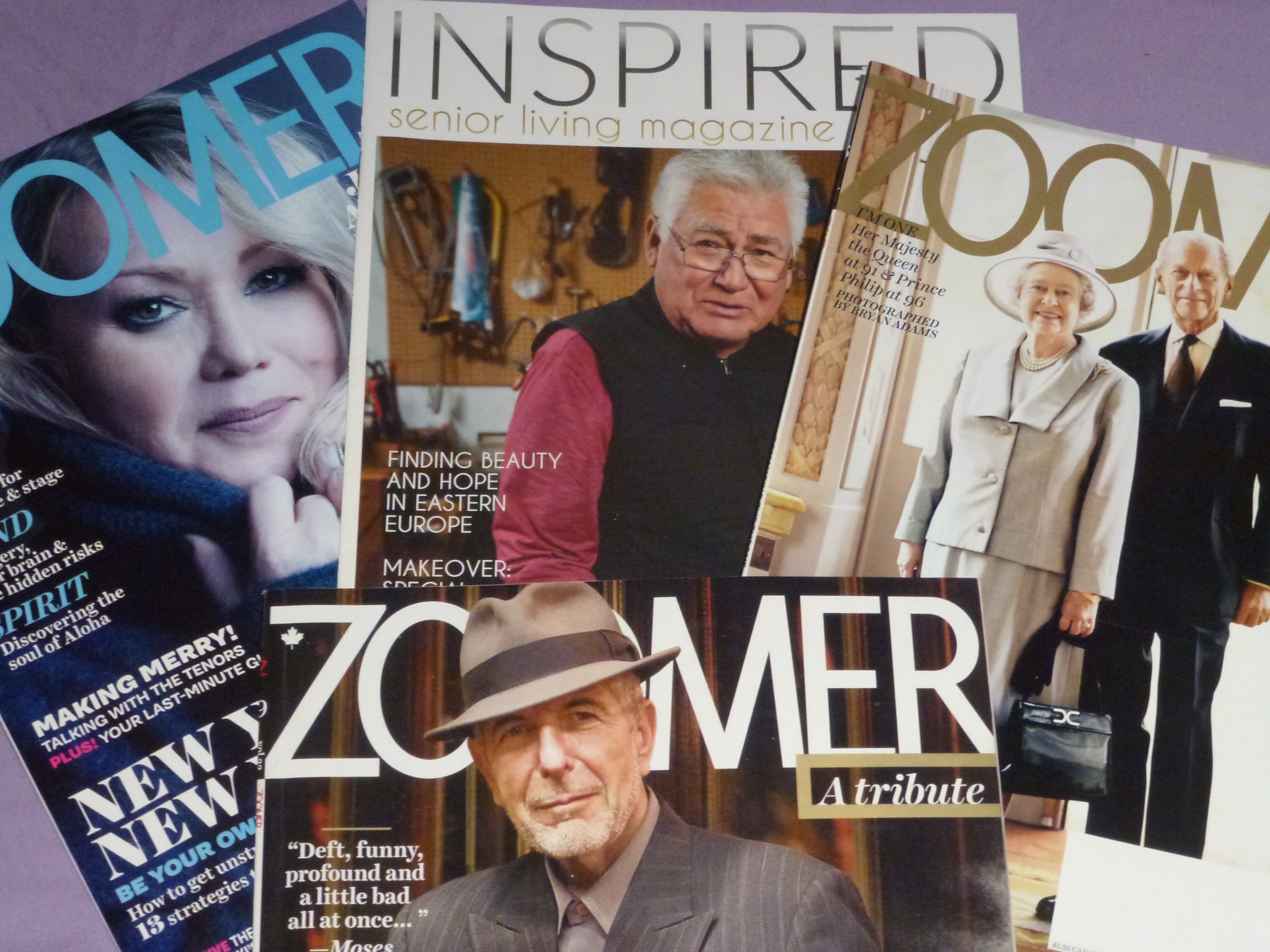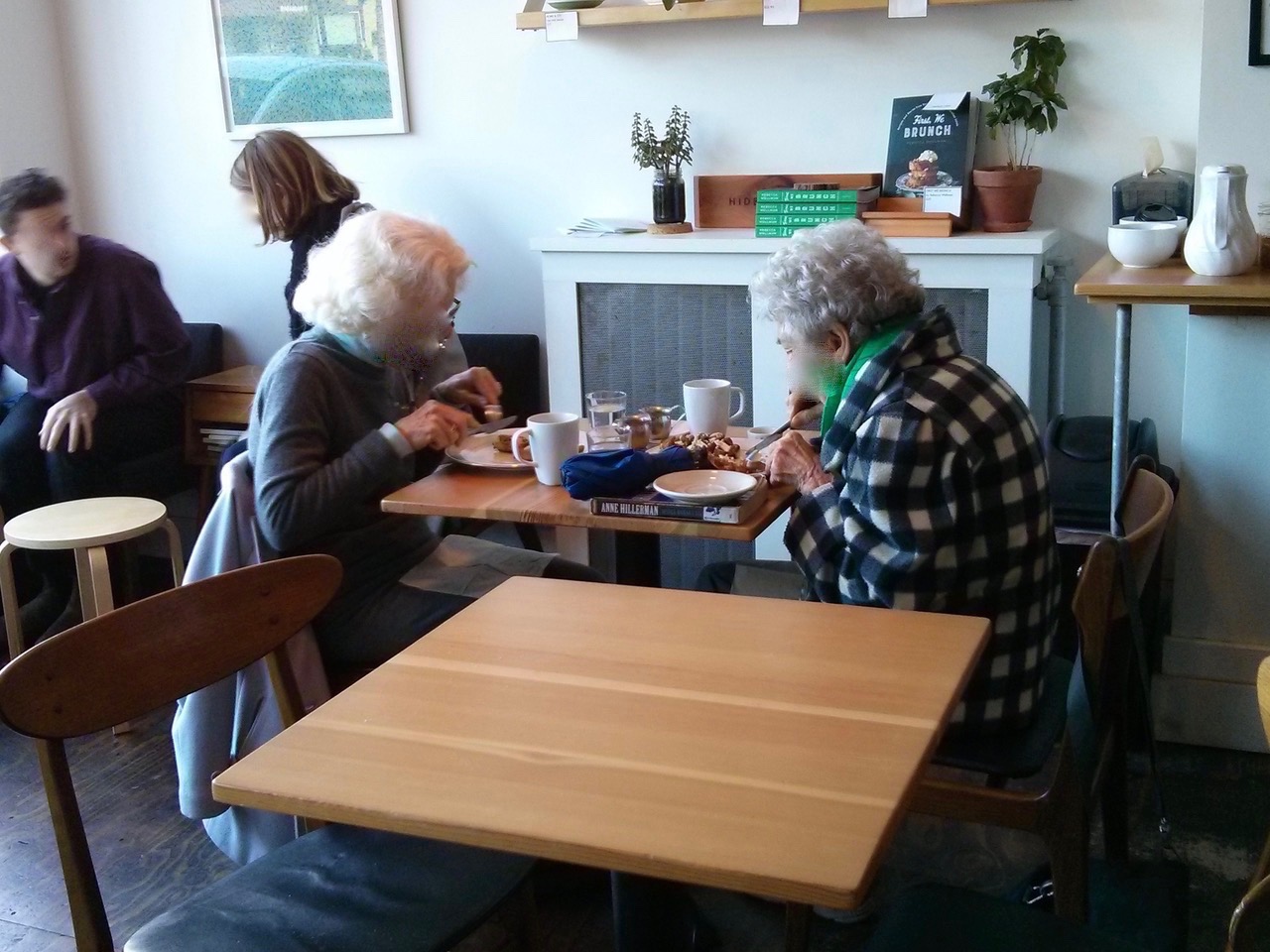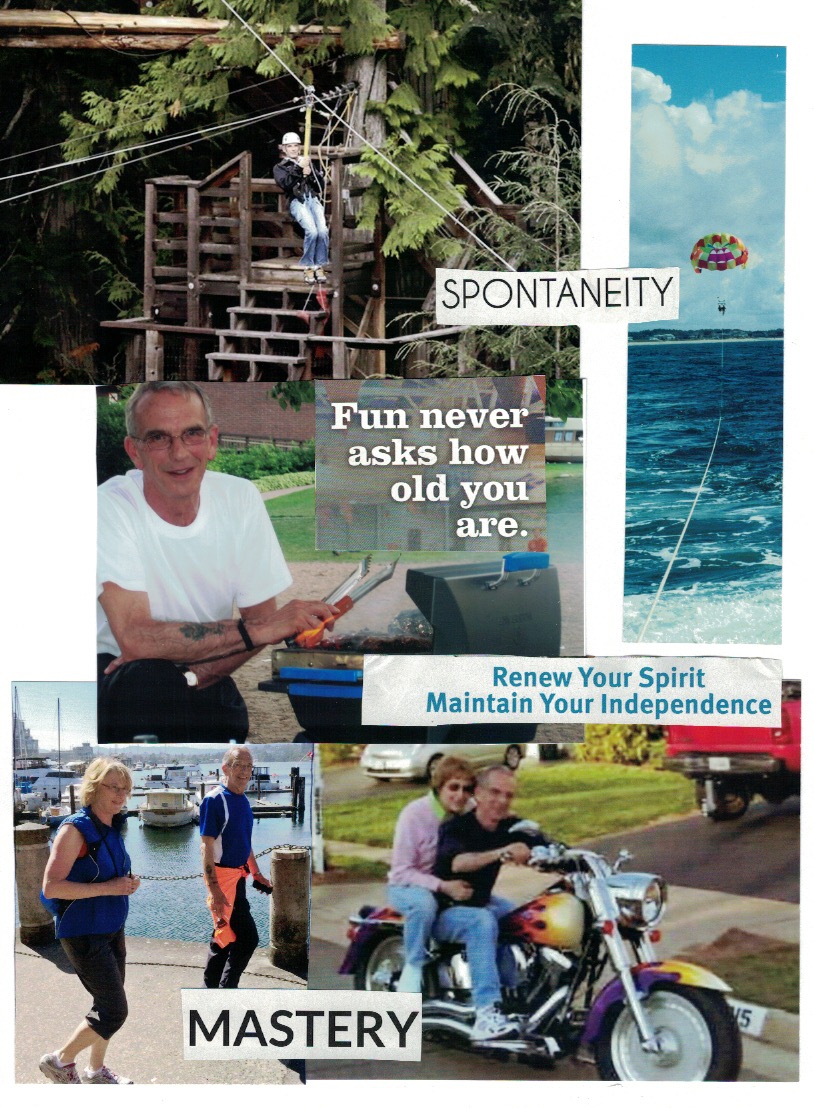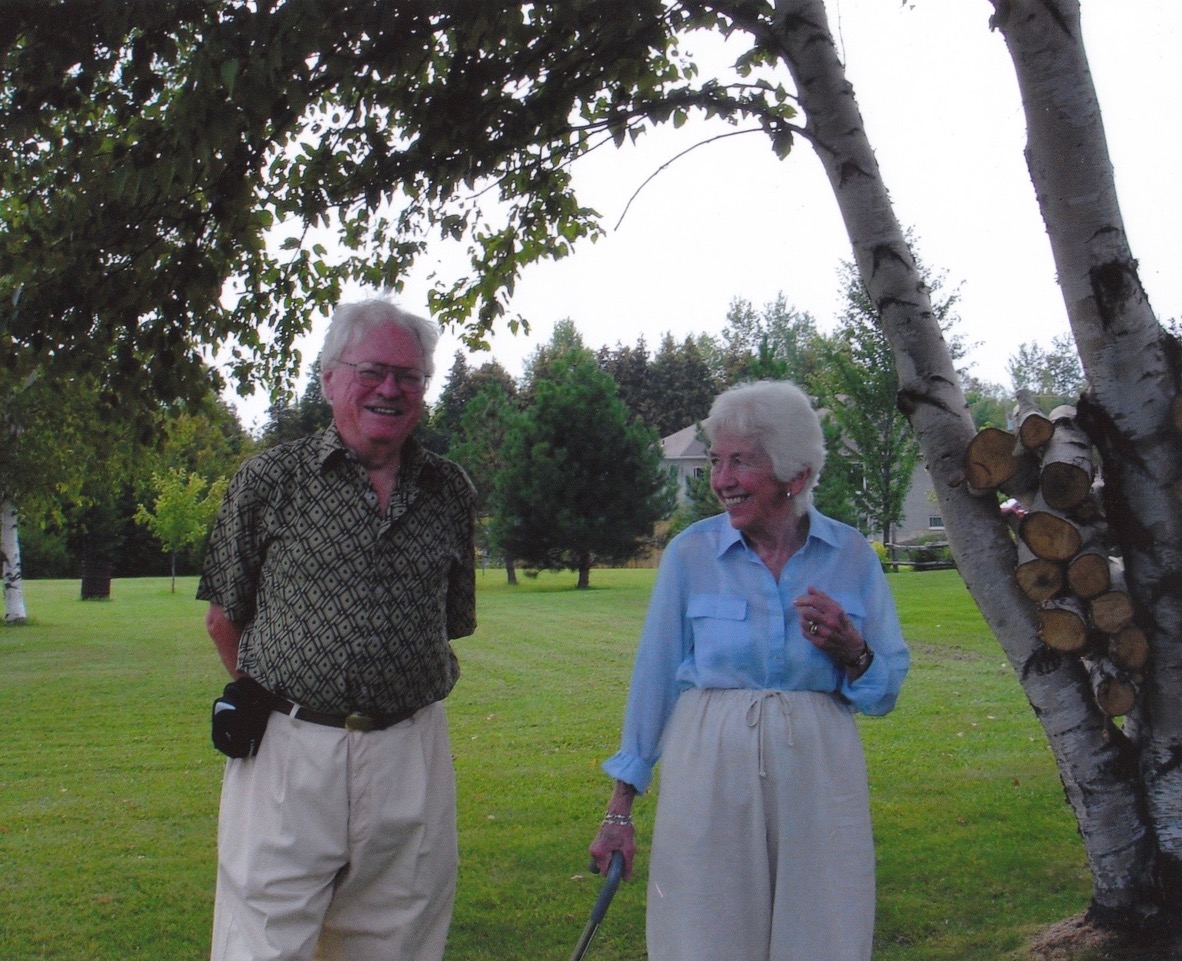Healthy aging
Introduction
Healthy aging: “The process of developing and maintaining the functional ability that enables wellbeing in older age” (World Health Organization, 2020). Further elaborating on this concept, the WHO states that: “Functional ability is about having the capabilities that enable all people to be and do what they have reason to value. This includes a person’s ability to: 1) meet their basic needs; 2) learn, grow and make decisions; 3) be mobile; 4) build and maintain relationships; and 5) contribute to society” (WHO, 2020).
Using their photographs as a starting point, participants discussed their responses to the following two questions: What does old age actually look like to you, irrespective of what society and media depict as old age? and How would you like old age to be portrayed in media and popular culture? In general, the participants’ personal experiences of old age reflected the WHO definition of ‘healthy aging,’ which was also how they would like to see old age portrayed in media and popular culture. Participants from both groups presented positive images of ‘old age that were varied and thoughtful – representing perspectives they felt were very rarely shown in media and popular culture. However, because the topic of ‘healthy aging’ was only discussed by two of the younger participants, their responses will be included below in the section – Perspectives on ‘healthy aging.’
Perspectives on 'healthy aging'
The images and discussion by participants in this section on healthy aging showed that in general participants viewed aging from the lens of ‘healthy aging’ and not ‘successful aging,’ although there were a few exceptions. Some had a point of view that resembled the ‘successful aging’ model, while others expressed concerns about the inequality embedded in the notion of ‘successful aging.’ Although the model of ‘healthy aging’ (as defined by the World Health Organization) has replaced the model of ‘successful aging’ it has not disappeared as a historical footnote. Instead, the influence and legacy of this concept continues to be debated and remains embedded in our perceptions about aging. Consequently, as ‘successful aging’ enters into the discussion below, a brief summary is necessary (see also ‘Concepts and definitions: Stereotypical models of old age’ for more detail).
While the concept of successful aging may be grounded in an intention to promote healthy and positive aging, certain problems are embedded in this concept. In brief, according to Rowe and Kahn, their model of “successful aging” has three main principles: “low probability of disease and disease-related disability, high cognitive and physical functional capacity, and active engagement with life” (Rowe & Kahn, 1997: 433). An analysis of this concept suggests that if an individual’s health declines in age, the fault is seen to lie with the individual which removes societal responsibility for frail older adults who are no longer healthy or productive, neatly fitting into neoliberal positions of individual responsibility and choice (Takaki, 2000; Dillaway & Byrnes 2009).
However, the emphasis from the majority of participants was on the ways in which older adults have active and healthy lives. They discussed this topic in terms of their own personal experiences of aging, as well as the need by the media and popular culture to promote representations of healthy aging. All of the older group of participants talked about the ways in which older adults stay engaged with life through a variety of activities that include: physical exercise (hiking, cycling, swimming, adventure sports); having fun (dancing, singing, performing); travelling; volunteering; gardening (alone and with others in a community garden setting); connecting to nature; exploring their creativity; maintaining intellectual curiosity; caring for pets; and having close intergenerational family relationships and/or engaging with people of different ages. Two participants from the younger group also discussed healthy aging in this way as well. One of those participants focused on physical activities, while the other younger age participant discussed the importance of encouraging positive intergenerational relationships. Participants felt that media and popular culture have a responsibility to change the current image of older age as frailty and/or passivity to one showing adults leading active and engaged lives, representing them in a variety of ways.
Reflecting the WHO’s definition of healthy aging, the perspective of ‘positive older age’ for the majority (8 out of 11) of the older age group of participants was not focused on maintaining perfect physical health or fitness, but adaptability – older adults adapting to the challenges of aging that can be physical, cognitive and emotional in a variety of ways. They pointed out that while some fortunate older adults continue to enjoy good health even into the fourth age, others do not. But some of those fourth age older adults, despite health and/or mobility issues, try to maintain or improve their own health in a variety of ways that include making use of assistive devices to increase their mobility options and engaging with friends and the community. Through this process they continue to embrace life. As mentioned in the earlier section on ‘Frailty and care,’ this perspective on the ability to adapt to change in older age is reflected in literature from the Netherlands. In North America, successful aging is associated with remaining healthy and independent; whereas seniors in the Netherlands believe that the secret to successful aging lies in “adjustment” to the variety of challenges of old age (Von Faber & van der Geest, 2010).
One female participant also drew attention to the fact that when media and popular culture portray older people in a positive manner, they frequently show older adults participating in physical activities (hiking, cycling, kayaking). She questioned this representation as it excludes people with mobility issues who may also be engaged in life, but in other ways. Her perspective was also echoed by a male participant whose photo in this section, ‘Going Places,’ reflects his point of view on independence and mobility devices in older age. While a few participants view scooters and walkers as a sign of frailty and dependence, he regards them as a method of maintaining independence and staying engaged with the world. He wished that media and popular culture would provide positive images of older people using these devices, rather than showing them in a negative context which is the norm. His opinion was shared by 6 other participants. One of the other female participants also corroborated this perspective, emphasizing that these devices give people more control over their lives and “more freedom to create the kind of life that sustains them.” As such, participants suggested that media and popular culture need to portray the use of disability aides (assistive devices) in a positive manner. However, these participants also noted that assistive devices such as scooters reflect the socioeconomic inequality of older age as they are quite expensive and therefore not accessible to everyone.
Within the discussions on healthy aging, the majority of the participants in the older age group (5 females, and 3 males) emphasized the value of volunteering, both for the person volunteering and to their communities. They pointed out that volunteering takes many forms and is not restricted to people in perfect health. People with disabilities and/or mobility issues can (and do) engage in volunteerism in a number of ways. For example, older people: serve on committees; work with seniors’ organizations to help other seniors; volunteer at their local community centres; help out in shared community gardens; as well as many other types of volunteerism. Volunteering in their communities and helping other individuals also has a positive impact on the older volunteers who feel useful and respected by others, something that is too often missing for older adults in our culture.
The boomer generation and the ‘third age’
Another perspective was introduced into the healthy aging discussion by two female participants who strongly identified with their boomer generation cohort, and indirectly to Peter Laslett’s 1989 ‘third age’ concept of older age, which proposed that life following retirement is a unique, cohort driven approach to older age he defined as the “third age.” Laslett suggested that in place of ‘old age’ the retirement years provide older adults with greater agency outside the confines of work, enabling them to make individual choices that will translate into personally fulfilling lives in their new identity in the “third age.” (For more information on the “third age” see Stereotypical models of old age: Third age superheroes and fourth age super-agers in Concepts and Definitions.)
One of these participants criticized the way in which media and popular culture portray old age (See the ‘Frailty and care’ section for details). From her point of view, there are two categories of older age: younger old age, (active and independent adults in their 60s), and older old age, (which she defined as older adults who no longer have the capacity or independence to continue to participate in active living). She classified herself as being part of the younger old age group, which she felt was not represented by media and popular culture. Instead, she said that media and popular culture present all old age as older old age, which has not been her experience as an older person. Both of these participants described the boomer generation as a special generation. This participant wanted “the positive generational change brought by the Boomers to be reflected in popular culture.” As she said: We are not like our grandparent’s generation. We look and act differently from that generation…We are staying active, looking good, wearing blue jeans and make up. We are active seniors engaged in healthy aging.” The other participant was in agreement with her, wanting media and popular culture to show Boomers as the active cohort they are. From her perspective, her cohort “is healthier and much more physically active than her parent’s generation; wealthier; often still working in older age; and very community-minded.” She strongly felt that the image of aging should change because it is not the way it used to be. The perception of aging reflected by these two participants finds resonance with Neugarten’s (1974) division of age into categories of the “young-old” and “old-old,” and Laslett’s (1989) concept pf the ‘third age.” (See ‘Defining and categorizing old age’ in Concepts and Definitions for more detail).
While the majority of participants were critical in their assessment of the representation of aging as frailty and decline by media and popular culture, one of the participant’s supporting the third age boomer model of aging, suggested that a few of the senior magazines, such as Zoomer and Inspired, presented more positive and inspirational images and messages. Rather than focus on the negative issues of older age, such as frailty in older age or the struggle that low-income seniors may face around the cost of housing, these magazines (Zoomer in particular) instead focus on seniors “being alive, vital and creative” – doing interesting and challenging things. Zoomer often features cover articles that highlight older artists, writers and musicians who have continued to produce award winning novels, great art and music in later life, while also providing short articles on activities like adventure travel. She felt that the ads in these two magazines were more balanced than other senior magazines she had seen. Ads in Zoomer had a blend of anti-aging ads for products like Botox and disability/frailty products, as well as other ads for upscale retirement living and travel, whereas the other magazine ads emphasized physical frailty and loss of capacity, which she felt generate negative emotions and opinions about older age.
One participant however provided a very different perspective on Zoomer Magazine in her discussion about film, TV and print media. She viewed Zoomer as having a negative influence on societal perceptions on aging and older age. From her point of view, Zoomer is marketed to affluent seniors, with an anti-aging focus embedded in youthfulness that encourages their readers to strive to stay young (or at least maintain an image of youthfulness). According to her, everyone in the magazine looks like they are still in their 50s, with very little diversity and very few people with grey or white hair, while the magazine’s cover articles generally promote people with celebrity status.
In this section on what old age looks like to participants, the older group of participants (and 2 of the participants from the younger age group) primarily focused on the positive side of old age. While the negative aspects of old age, such as illness and visits to the doctor, as well as the loss of family and friends were not denied (and in fact participants often emphasized that both sides of aging should be represented), they also very much wanted the joyful side of old age to be represented in media and popular culture. And too, most participants were aware of the socioeconomic inequalities that make ‘positive’ old age challenging for many individuals who are struggling with health issues, as well as housing and general financial insecurity. But even in this context, many older adults have more time to enjoy family and friends (including partners, older parents and grandchildren); engage in a variety of activities; pursue creative and intellectual interests; volunteer and give back to the community; and just enjoy life.
